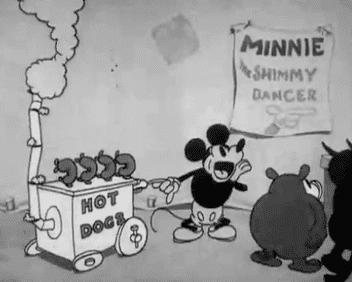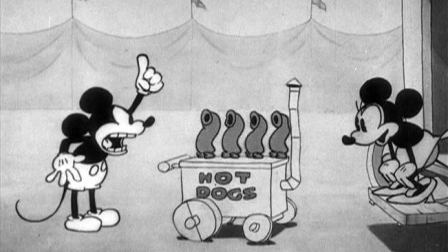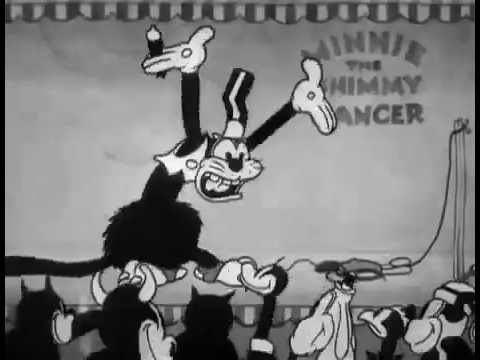The Karnival Kid
4 /10 1 Votes
Duration Language English | Director Walt DisneyUb Iwerks Country United States | |||||||||||||||||||||||||||||||||
 | ||||||||||||||||||||||||||||||||||
Release date May 23, 1929 (1929-05-23)(USA) | ||||||||||||||||||||||||||||||||||
Mickey mouse the karnival kid 1929
The Karnival Kid is a 1929 American animated short film directed by Walt Disney and Ub Iwerks. It was produced in black and white by The Walt Disney Studio and released to theaters by Celebrity Productions. It is the ninth film in the Mickey Mouse film series, and the first in which Mickey speaks. (During his first eight appearances Mickey whistled, laughed, cried and otherwise vocally expressed himself.) Mickey's first spoken words were in this cartoon, "Hot Dogs!" "Hot Dogs!", the voice being provided by composer Carl Stalling.
Contents
- Mickey mouse the karnival kid 1929
- The karnival kid 1929 legendado
- Synopsis
- Legacy and influence
- References

Besides Mickey, three other recurring characters of the series also appear. The first is Clarabelle Cow in a cameo. The second is Kat Nipp, making his third and last appearance. The third is Mickey's recurring love interest, Minnie Mouse.

The karnival kid 1929 legendado
Synopsis

The Karnival Kid is broken into two distinct segments. The first segment features Mickey selling hot dogs at a carnival. The second segment is set later that night and features Mickey, accompanied by two cats, in a moonlight serenade.

The short opens to the scene of a bustling carnival. After a few initial sight gags, the action quickly focuses on Kat Nipp, a barker at the carnival who is enticing a crowd to see Minnie, "the Shimmy Dancer." Mickey stands nearby, selling hot dogs and heckling Nipp. Nipp briefly gets into a dispute with Mickey over a dancing doll scam. However, Minnie soon notices Mickey and calls him over to order a hot dog. She takes a coin out of her stocking to pay, but Mickey, who is clearly attracted to her, refuses to accept the coin and gives it to her for free. When she bites into the hot dog, it screams and runs away. Mickey catches it and spanks it, concluding the first segment. Much of the humor in this segment comes from the interaction between Mickey and his hot dogs, with the latter tending to act like actual dogs in relation to their owner/trainer.

In the second segment, Mickey attempts to draw Minnie's attention by playing guitar outside her window. He is joined by two alley cats who noisily sing along. The sound delights Minnie but awakens an irate Kat Nipp, who had been resting in a nearby trailer. Nipp starts throwing things at the three annoyances in an attempt to silence them. The short ends as Mickey is hit with an entire bed and knocked dizzy.

Stalling's score for The Karnival Kid features two notable themes. During the "Shimmy Dance" sequence, a monkey, performing as a one-man band, plays the Snake Charmer song, the common name for The Streets of Cairo. During the moonlight serenade segment, Mickey and the cats perform a rendition of the barbershop standard Sweet Adeline.
Legacy and influence
Mickey's first words may have inspired the "Hot Dog" song from Mickey Mouse Clubhouse.
The scene where Mickey tips his ears to Minnie inspired storyman Roy Williams to invent the Mickey Mouse ears hat.
Ub Iwerks reused elements of the plot and many of the visual gags from The Karnival Kid in his 1932 cartoon, Circus. The part of the hot dog vendor is played by Flip the Frog.
New York Weenie, an episode from the 2013 Mickey Mouse shorts series, shares similar themes and gags with The Karnival Kid. The episode was directed by Aaron Springer, most notable for his work on SpongeBob SquarePants.
Artist Bruce Conner included the final shot in his film "3 Screen Ray"
